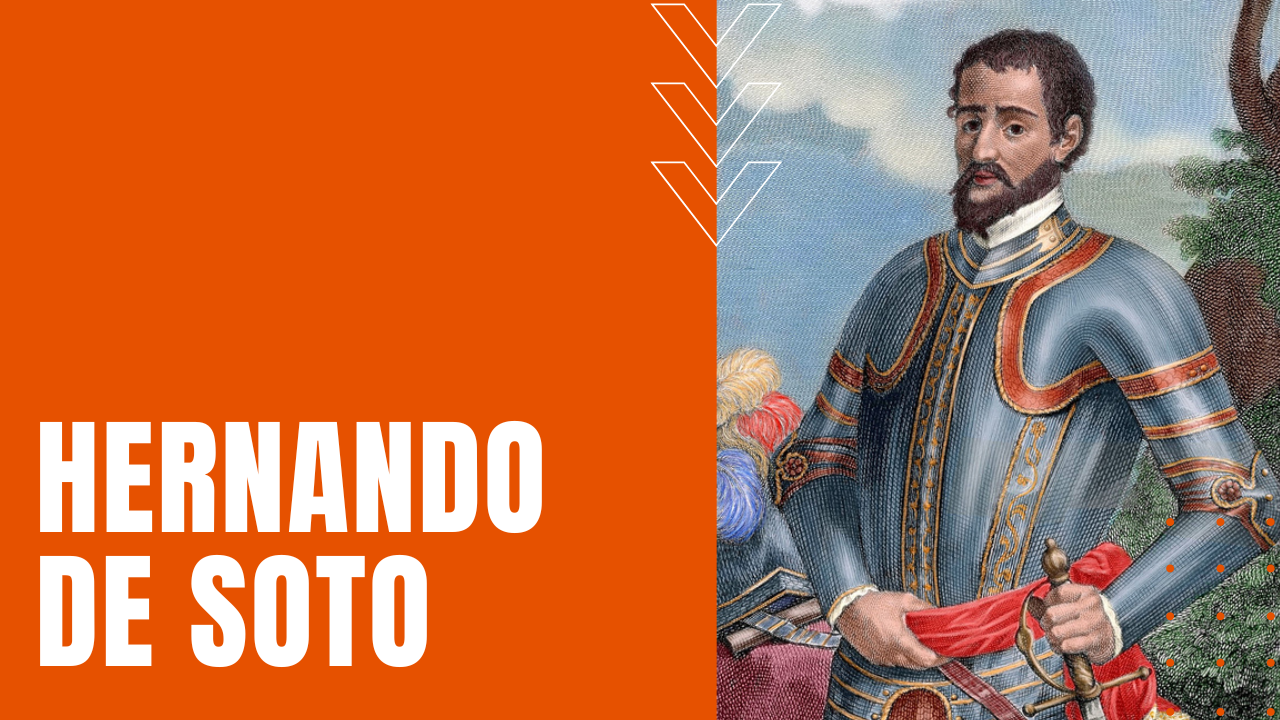Hernando de Soto

Dreaming of making his fortune in the New World, at fourteen years of age, Hernando de Soto set sail for the West Indies in 1514 under the command of Pedro Arias Dávila, earning a small fortune during Davila’s later conquest of Panama and Nicaragua.
de Soto the Slave Trader
Sixteen years after his departure from Seville Spain, de Soto had become one of the leading slave traders in Nicaragua, as well as one of the wealthiest men in present-day Central America. In 1531, de Soto teamed up with Francisco Pizarro on an expedition to northwestern Colombia, in pursuit of a rumored cache of gold in the region.
Defeats the Incas
A year later de Soto signed on as Pizarro’s chief lieutenant during the explorer’s conquest of Peru, defeating the Inca people at Cajamarca in November of 1532, later capturing the last Incan emperor Atahualpa before executing him in 1533, despite a large ransom payment by the Inca people to spare the emperor’s life. Growing ever wealthier when the ransom gold was divided, de Soto was later named lieutenant governor of Cuzco, before assisting Pizarro in the founding of Lima in 1535.
A Wealthy Conquistador
A year later, de Soto returned home to Spain as one of the wealthiest conquistadors of his time, marrying Dávila’s daughter before accepting a royal commission as governor of Cuba, at the same time accepting the challenge of settling La Florida, which had first been explored by Juan Ponce de Leon. Sailing from Spain in April of 1538, with 10 ships and 700 men, after spending time in Cuba, de Soto landed at Tampa Bay in May of 1539, setting up his winter quarters near present-day Tallahassee.
Explores the American South
During the spring of 1540, de Soto and his men explored present-day Georgia, the Carolinas and Tennessee, and after no gold was discovered in the region, de Soto headed south to rendezvous with his ships near Mobile Bay, coming under attack by hostile Indians in October of that same year, which caused egregious casualties on both sides.
Sights Mississippi River
Sighting the Mississippi River in mid-1541, the ever-ambitious de Soto traversed Arkansas and Louisiana by early 1542, before passing away on May 21st of 1542, after succumbing to a fever. His unfinished expedition would be led by his successor, Luis de Moscoso Alvarado, which finally reached Mexico in 1543, with nearly half of de Soto’s original body of men lost to disease, illness and hostile attacks by Native Americans, making the exploits of Hernando de Soto, some of the boldest expeditions during the Age of Exploration.
